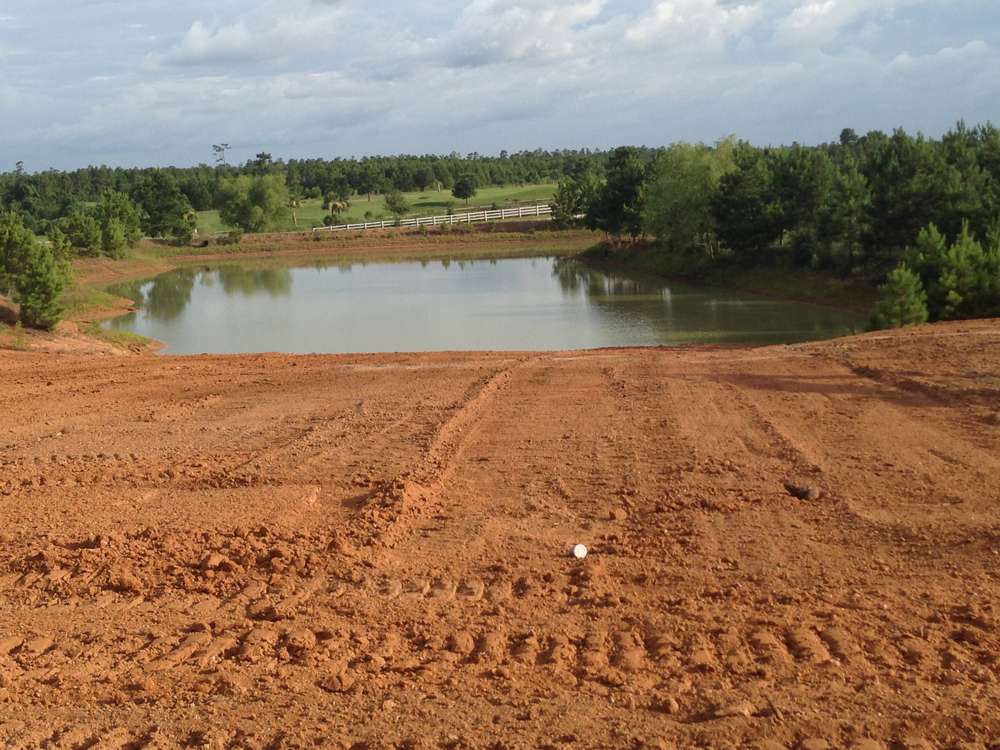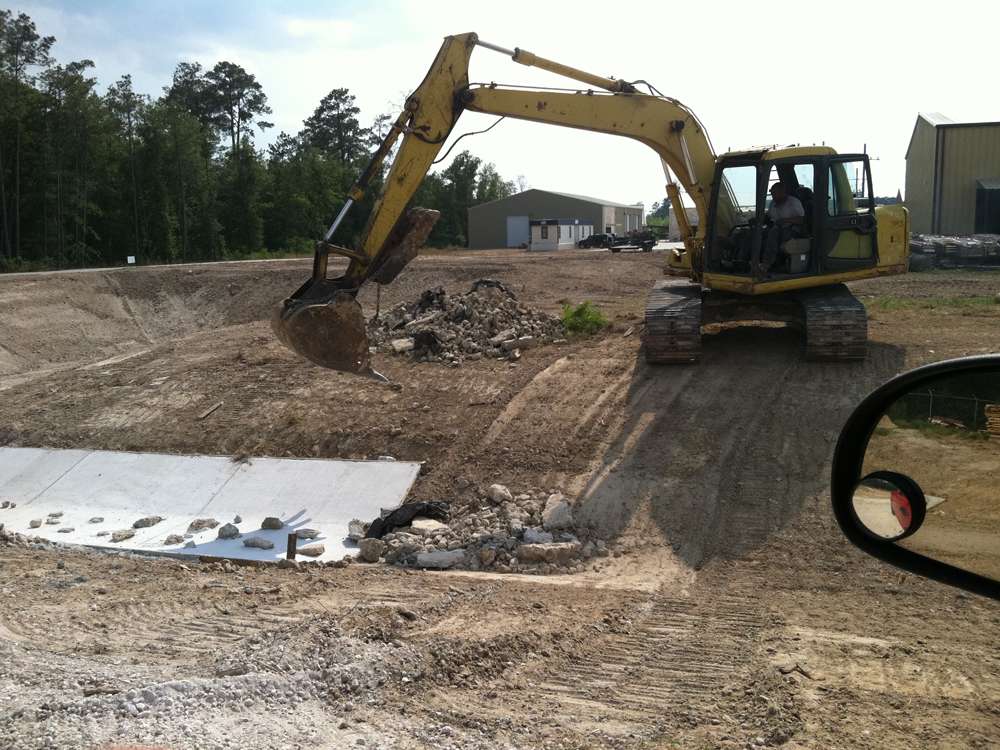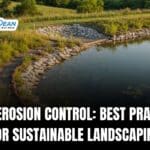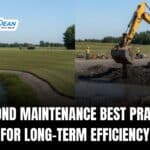Have you ever wondered how much a neglected silt pond could really cost you? A silt pond is designed to trap sediment and protect waterways, but without proper care it can quickly lose efficiency. Sediment buildup often forces property owners to invest in expensive dredging and pond silt removal, with costs ranging anywhere from $5,000 to $30,000 per acre. In many cases, stormwater ponds, including silt ponds and sediment basins, require major silt removal every 5 to 15 years if routine maintenance is ignored.
The problem is clear: failing to maintain a silt pond does not just harm the environment, it can also put a heavy strain on budgets. The good news is that with the right strategies, you can extend the lifespan of your pond and reduce costly interventions. In this blog post, we will explore best practices that keep a silt pond running efficiently for the long term.
1. Regular Sediment Monitoring and Removal
One of the most critical aspects of maintaining a silt pond is keeping a close eye on sediment accumulation. When left unchecked, silt gradually fills the pond, cutting down its storage capacity and making it less effective at controlling runoff and trapping pollutants. A neglected silt pond can quickly shift from being a protective feature to a source of overflow and erosion problems.
The most reliable way to manage this is through scheduled monitoring. Many pond managers use depth markers, staff gauges, or periodic surveying to measure sediment buildup over time. Once sediment reaches about one-third of the pond’s original design volume, pond silt removal becomes necessary to restore efficiency.
Silt removal methods vary depending on the pond’s size, depth, and accessibility. Smaller silt ponds may be cleaned using excavation or vacuum pumping, while larger sites often require full dredging. Proactive pond silt removal prevents costly structural damage, avoids compliance issues, and extends the functional life of the pond.
2. Inlet and Outlet Structure Maintenance
The efficiency of a silt pond relies heavily on the condition of its inlet and outlet structures. These components control how stormwater flows through the pond and ensure that sediment is properly captured before water is discharged. If inlets become clogged with debris or outlets are damaged, water can bypass the system entirely, leading to erosion, flooding, or uncontrolled sediment release downstream.
Regular inspection is essential. Inlets should be checked for sediment blockages, construction runoff, and accumulated trash that restricts water flow. Outlets, including riser pipes, spillways, and trash racks, need to be free from obstructions and kept structurally sound. Even minor cracks or erosion at pipe joints can quickly escalate into larger failures if not addressed.
After heavy rainfall or nearby construction work, maintenance crews should prioritize clearing both inlets and outlets. Flushing out sediment, removing debris, and repairing erosion around pipe connections reduces hydraulic pressure on the embankments. Consistent upkeep of these structures not only helps the silt pond perform at its design capacity but also prevents environmental violations caused by uncontrolled discharges.
3. Vegetation Management and Erosion Control

Vegetation is one of the most overlooked aspects of silt pond maintenance, yet it has a direct impact on erosion control and long-term performance. While healthy grass and native plants can stabilize embankments and slow down runoff, unmanaged vegetation often creates problems such as blocked inlets, hidden erosion, or damage from invasive root systems. Proper vegetation management balances protection with accessibility.
Best practices for vegetation and erosion control include:
- Mowing and trimming regularly to keep grass and plants at a manageable height without leaving embankments bare.
- Removing invasive or woody plants that may obstruct inspections or damage pond walls with deep root systems.
- Stabilizing bare soil areas with erosion-resistant grasses, mulch, or geotextiles to prevent sediment from washing into the pond.
- Using riprap or rock armoring in high-flow areas where vegetation alone cannot withstand water velocity.
- Creating a vegetated buffer zone around the pond to filter runoff before it enters the water.
When managed correctly, vegetation becomes an asset rather than a liability. A well-maintained plant cover strengthens the pond’s structure, prevents excess silt from entering the system, and improves overall efficiency while supporting compliance with environmental standards.
4. Inspection and Structural Integrity Assessment
Routine inspections are one of the most effective ways to extend the lifespan of a silt pond and prevent costly failures. Over time, weather events, sediment accumulation, and water pressure can weaken the pond’s structure, leading to erosion, seepage, or even embankment collapse if problems are not identified early. A proactive inspection schedule ensures that issues are caught before they escalate into expensive repairs or regulatory violations.
Key areas to inspect regularly include:
- Embankments: Look for cracks, slumping, or bare spots that may indicate erosion or instability.
- Spillways and outlets: Check for blockages, damage, or signs of water bypassing the intended flow path.
- Sediment levels: Measure buildup against design capacity to determine when pond silt removal is needed.
- Liners or geotextiles (if present): Inspect for tears, punctures, or displacement that could compromise performance.
- Surrounding soil and slopes: Watch for seepage, wet spots, or gullies that suggest water is escaping outside the pond’s containment.
Documenting each inspection and acting quickly on repair needs reduces the risk of structural failure. Even small signs of damage, such as a minor erosion scar or a leaking pipe joint, can grow into major hazards if ignored.
Combining regular visual checks with thorough structural assessments ensures that the silt pond continues to operate safely and efficiently for years. To learn more, visit How Dredging Services Improve Farm Drainage.
5. Hire Professional Services

Not every aspect of silt pond maintenance should be handled in-house. While smaller tasks like mowing, trimming, or clearing debris can be done with regular staff, large-scale maintenance such as pond silt removal, dredging, or repairing embankments requires the expertise of trained professionals.
A professional service provider not only brings the right equipment but also ensures that all work is performed in compliance with environmental and safety regulations. This level of expertise is especially important for property owners, contractors, or municipalities managing multiple ponds.
| Task | In-House Team | Professional Services |
| Routine mowing and trimming | ✔️ Possible | ✔️ Possible |
| Debris clearing (inlets/outlets) | ✔️ Possible | ✔️ Possible |
| Pond silt removal (dredging, pumping) | ✖️ Not recommended | ✔️ Specialized equipment |
| Structural repairs (embankments, spillways) | ✖️ Risk of failure | ✔️ Expert engineering |
| Compliance documentation | ✖️ Limited | ✔️ Accurate and reliable |
Partnering with professionals like Daniel Dean provides peace of mind and long-term cost savings. Beyond technical execution, contractors deliver accurate reports, maintenance records, and compliance documentation that protect against liability and regulatory fines.
The benefits go beyond efficiency: professional services reduce risks, extend the lifespan of the silt pond, and free up resources so property owners can focus on core operations instead of crisis management. For more insights, see Top Mistakes Killing Weeds in Ponds.
Frequently Asked Questions
How to reduce silt in a pond?
Reducing silt in a pond starts with controlling erosion around the pond and managing runoff that carries sediment. Planting grass or native vegetation on embankments, installing silt fences, and using riprap in high-flow areas are effective strategies. When sediment levels get too high, pond silt removal through dredging, pumping, or excavation becomes necessary to restore the pond’s capacity and efficiency.
What kind of maintenance does a pond require?
A silt pond requires regular inspections, sediment monitoring, inlet and outlet cleaning, vegetation management, and structural assessments. Smaller tasks like mowing or clearing debris can often be done in-house, but larger activities such as silt removal and structural repairs are best handled by professionals to ensure compliance and long-term effectiveness.
How long does it take for pond silt to settle?
The settling time for pond silt depends on factors like water flow, sediment size, and pond design. Fine particles may stay suspended for days, while heavier sediments settle within hours. A well-designed silt pond slows water flow long enough for sediment to drop out, but without regular maintenance, capacity decreases, and settling efficiency is reduced.
Final Thoughts on Silt Pond Maintenance Best Practices for Long-Term Efficiency
Maintaining a silt pond is not just about compliance, it is about protecting your investment and safeguarding the surrounding environment. From regular sediment monitoring to proper vegetation management, every step you take helps extend the life of the pond and prevent costly repairs. Ignoring maintenance can lead to structural failures, expensive dredging, and environmental penalties, while a proactive approach ensures your pond continues to function as designed for years to come.
The next step is simple: take action before small issues become major problems. Whether you need routine inspections, professional pond silt removal, or full-scale land management solutions, expert help makes the difference.
At Daniel Dean, we specialize in keeping ponds, land, and waterways efficient, safe, and compliant. For inquiries or to discuss your maintenance needs, contact8 us today and let our team provide the expertise and equipment to get the job done right.






